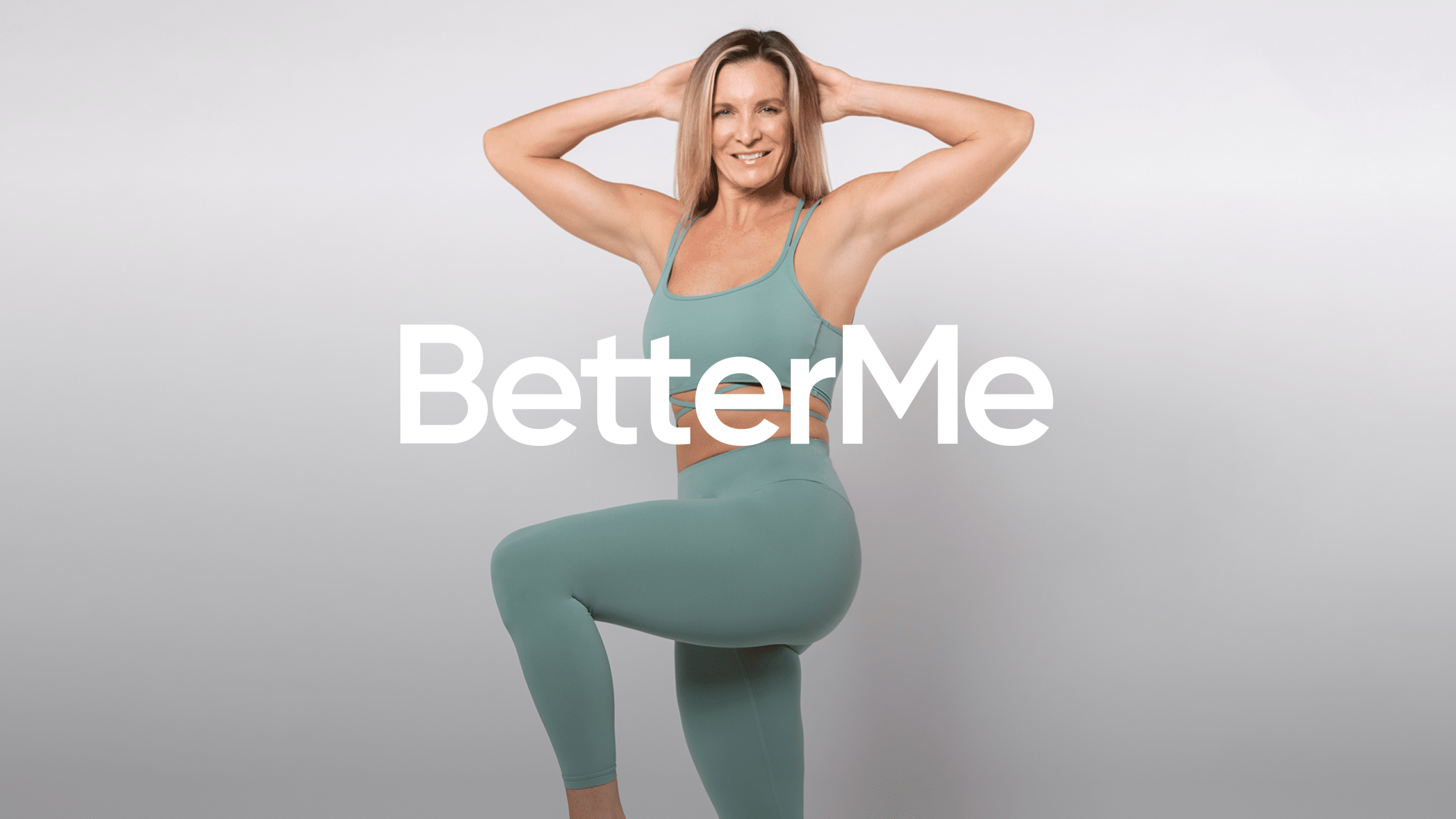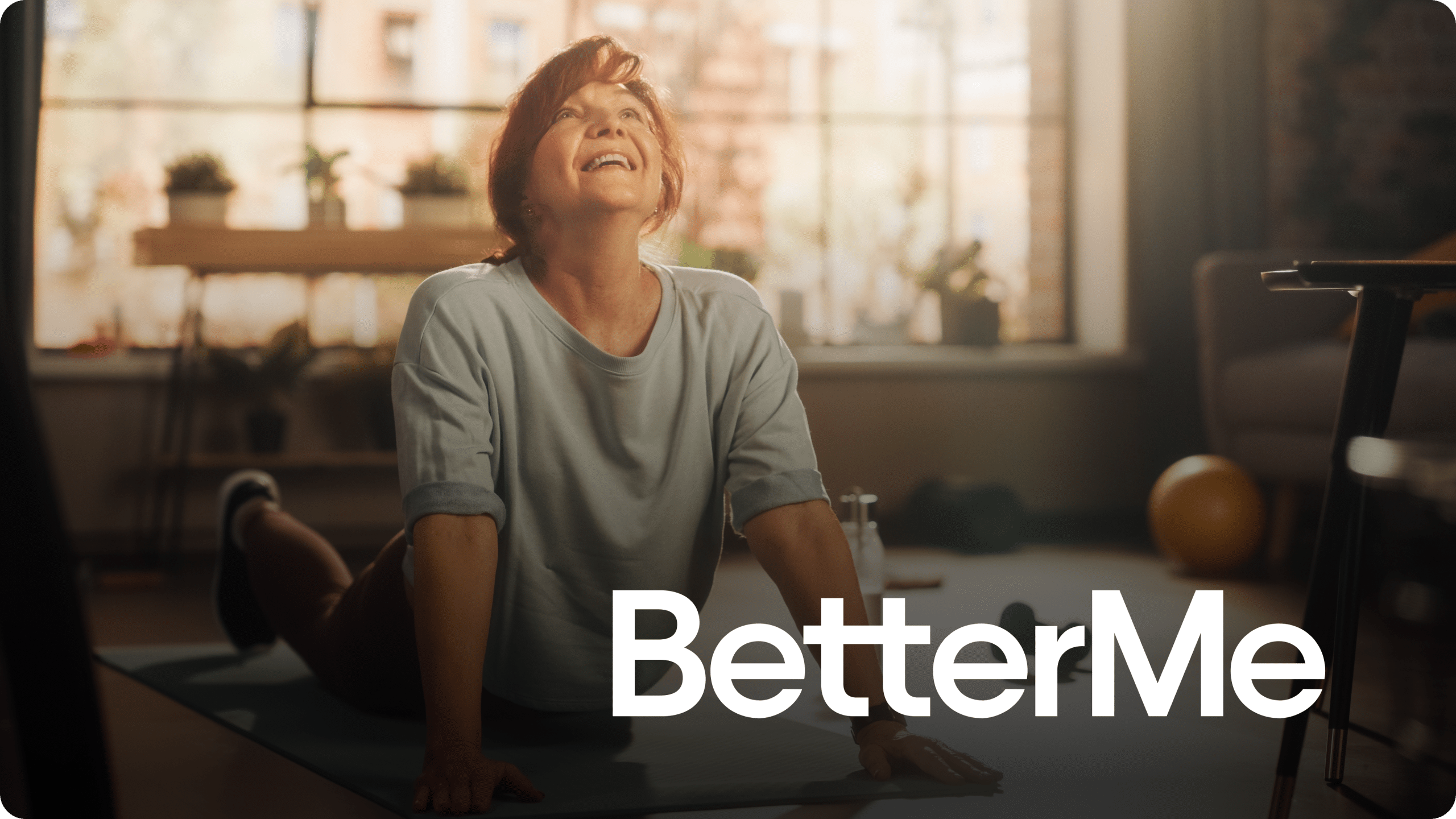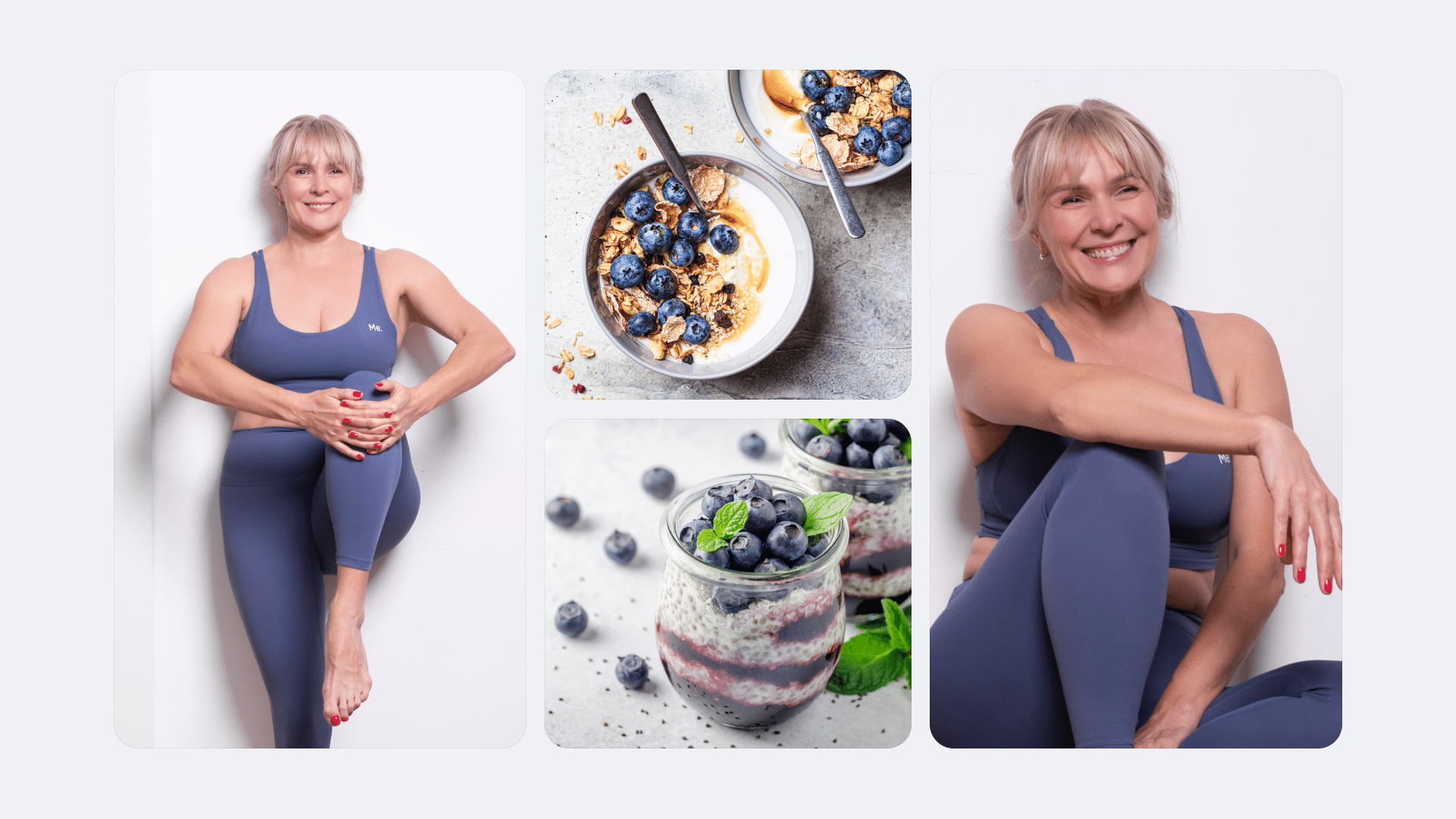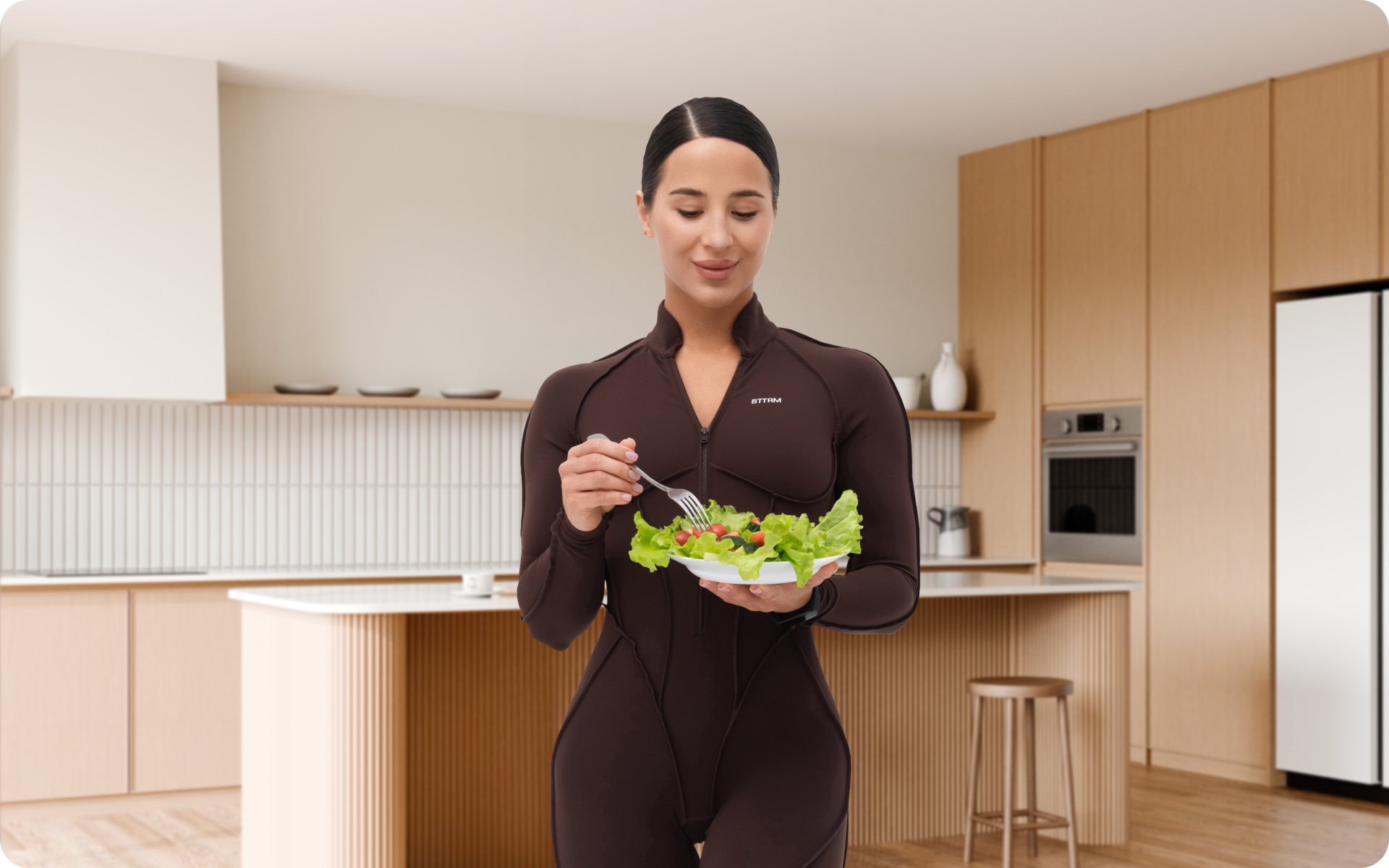Losing weight is often a frustrating process that demands a lot of patience and requires extraordinary effort. For women over 50, it can be even tougher. As you get to 50 and over, losing weight becomes more challenging due to your slowing metabolism.
But this doesn’t mean that weight loss after 50 is entirely impossible. There are many great ways to lose weight at this age, but what is the best diet for women over 50? We explore keto as one option for women over 50 and it can be used effectively for weight loss.
Why Is Weight Loss After 50 So Hard?
As you age, your body undergoes several changes. At 50, you’re no longer young and your muscle mass may have started to naturally decline. Here are reasons why losing weight becomes more difficult with age:
Slow Metabolism
As you age, your body’s metabolism slows down. When you burn more calories than you consume, you lose weight. However, with a slower metabolism, your body burns fewer calories at rest and during activity.
Muscle Degeneration
Muscle degeneration also takes place as you get older. There is the involuntary loss of muscle mass, function, and strength. Muscle mass decreases by approximately 3 to 8% per decade after the age of 30 (20). And because muscle takes more energy to maintain than other types of tissue, as you lose lean muscle mass, your metabolism starts to slow down.
Menopause
During menopause, some women may experience an increase in body fat. When women are younger, they tend to collect fat around their hips and thighs. This is known as gynoid fat distribution.
However, as women enter perimenopause and menopause, the fat distribution pattern changes. Fat starts accumulating around the abdomen (28). This pattern is called android fat distribution and is common in males.
These changes are a result of hormonal changes. Menopause officially occurs when a woman has not had a menstrual period for about 12 months. After menopause, a woman’s estrogen levels are generally lower. Reduction in estrogen levels has been suggested to be linked to an increase in body fat (10).
Keto Diet for Women Over 50
At this point, you may be wondering what a keto diet is. It is basically a high-fat, very low-carb, and moderate-protein diet. A keto diet requires that you cut down on carbs and increase your (healthy) fat consumption to cause the body to start burning fat as its primary energy source instead of carbohydrates.
Keto and low-carbohydrate diets can promote weight loss like any other diet, provided that they create a reduction in overall calorie intake that a person can maintain. Studies have found conflicting results regarding whether keto diets are beneficial, detrimental, or have no effect on heart health parameters (8). It’s likely that factors such as weight loss and types of fats consumed play a role. Some people find that low carbohydrate or keto diets help them shed extra fat without the effect of intense cravings that are common to other types of diets, although this is down to personal experiences.
At the heart of a ketogenic diet are ketones. When the body is low on carbohydrates, it produces ketones from fat as an alternative energy source (16). Production of ketones occurs when you cut down your carb intake and take the right amount of protein.
When you eat keto-friendly meals, your liver can convert fat into ketones that are used as energy by your body. This state where your body uses fats as its main energy source instead of carbohydrates is referred to as ketosis. Advocates of the keto diet claim that this allows fat burning to increase dramatically, potentially helping get rid of unwanted fats. You’ll still need to be in a calorie deficit (where you eat fewer calories than you burn) in order to burn stored body fat.
So, how many carbs can you have on keto? A ketogenic diet should contain approximately 5% of energy from carbohydrates, 25 % from protein, and 75% from fats (17). You can easily check whether your body is in ketosis by taking a simple urine test. Keto test strips are available over the counter at your local pharmacy.
BetterMe is your fast-track ticket to a long-lasting weight loss! Tailor your fitness journey and maximize your results with just a couple of swipes!
Here are 10 tips on how to get the best out of a keto diet for women over 50:
Don’t Skimp on Protein
Protein is an essential component on the keto diet menu for women over 50. For weight loss, consuming the right amount of protein is essential. Protein is vital as it helps increase or maintain muscle mass and prevent a metabolic slowdown.
In fact, protein boosts metabolism slightly. This macronutrient has a higher thermic effect on food than other nutrients. The thermic effect of food refers to the number of calories required to digest and metabolize the food.
Protein also regulates the hunger hormone ghrelin. It causes a reduction in the production of ghrelin, which leaves you feeling full for longer (9). So after eating a high-protein breakfast, it’s unlikely that you will reach for a snack before your next meal.
The generally recommended amount of protein is 0.8 grams per kilogram of body weight per day, but most dietitians would suggest that older adults consume more than that, perhaps 1-1.2 grams per kilogram, or even more if you’re physically active (7). Some medical conditions can also influence protein requirements. Talk to a registered dietitian or your healthcare provider for individualized recommendations.
Get the Right Amount of Fats
The whole point of a Keto for Women Over 50 is to cut back on the carbs while getting the right amounts of healthy fats. One of the best parts about keto eating is that you get to eat more fats at every meal. However, once you become fat-adapted, you may end up overconsuming fats.
If you want to cut weight, you have to use up the fat stores in your body instead of getting all your calories from eating fats. Some experts suggest that when you first start a keto diet, it’s okay to eat high amounts of healthy fats (27).
When you become “fat-adapted”, meaning that your body is used to burning fat as its main energy source, you’ll need to be more careful. You still need to create a calorie deficit by eating fewer calories than your body burns in order for it to start burning your stored fat for energy. As fat is calorie-dense, it’s easy to eat more calories than you realize when you’re on a high-fat diet.
It’s also important to focus on consuming mostly healthy fats and fewer saturated fats. Some studies have found that the keto diet can increase LDL cholesterol levels, but it’s possible that limiting saturated fat and including mostly heart-healthy unsaturated fats can help mitigate this risk.
Ensure that you’re mindful of your fat intake without sacrificing fullness or prompting the return of cravings for salty or sugary ultra-processed foods. Also, don’t starve yourself; just watch out for the excess fat.
Manage Stress
Stress is an outright enemy of weight loss. When you are under stress, the body causes the release of cortisol (15). This sends your body into a flight or fight mode, temporarily pausing non-critical processes in the body and increasing blood sugar. While cortisol is an important hormone, when chronically elevated, it can be harmful.
Cortisol may cause hunger and increase your appetite. It may also cause cravings for sugary, fatty, and salty foods. This means you’ll likely forget about your keto-friendly foods and grab some french fries, burgers, or pizza instead.
Cortisol can also promote weight gain and fat storage when it is chronically elevated.
And while you’re in your 50s, there are many things to stress about – your kids, home, friends, and relatives. Even worrying about your weight loss can contribute to your overall stress level. You can’t eliminate stress from your life, but you can take steps to better manage it.
Try to take some time off things and relax. You can engage in pleasant diversions such as knitting, meditation, walks, crocheting, or reading a book.
Cut Back on Alcohol
Alcohol contains many extra calories, which makes it a key contributor to weight gain if you drink a lot. An occasional glass of wine or beer probably will not hurt, but drinking a lot or very often has a negative effect on weight loss.
When you consume alcohol, your body’s metabolic priority changes. The body pauses the metabolization of other substances to metabolize alcohol. This is because the body wants to get rid of the toxic byproduct of alcohol called acetaldehyde.
Even while on a keto diet, drinking alcohol to excess is counterproductive. So if you’ve reached a stall and you can’t seem to lose any more weight, it may be best to cut back on the booze.
Read more: Is Pho Keto? The Ultimate Guide to Enjoying Pho on a Low-Carb Diet
Get Plenty of Quality Sleep
During menopause, which typically takes place between 40 and 50, it’s quite common to experience sleep disturbances (23). Poor sleep has been associated with positive energy balance, which could cause weight gain over time (2). So, if you’ve reached a plateau, check whether you’re getting quality sleep.
Getting an inadequate amount of sleep may also increase the release of the primary stress hormone cortisol, which is linked to abdominal fat (15). To get better sleep, try going to bed at the same time every day. Also, sleep in a dark room and avoid drinking alcohol or caffeine before bed.
Cut Back on Carbs
For keto for women over 50 to be effective, you need to limit the number of carbs you consume. But once you’ve been following your keto diet, carbs may creep back in. This could be in the form of nuts, fruits, and sauces.
You may need to check your carb intake, then cut back to consuming under 50 grams of net carbs (or whatever your goal is) per day. Be on the lookout for highly processed foods that are rich in carbs, such as bagels, breakfast cereals, pastries, and waffles.
Experiment with Intermittent Fasting
Once your body is fat-adapted and you can comfortably go for long hours without eating, you can try intermittent fasting. With intermittent fasting, you alternate between periods of fasting and eating. An individual usually goes without food for approximately 12 to 24 hours, with 16-hour fasts being the most popular.
One strategy for eating less on a low-carb or any diet is to only eat when you’re hungry and not to a specific eating schedule as many people are accustomed to. You can try a 24-hour fast where you eat dinner tonight then eat again at dinner the following day.
Alternatively, you can skip breakfast, then eat lunch and dinner within an 8-hour time frame, before fasting for 16 hours. You can also start slow with a 12-hour fast and work your way up to 16 or whatever your goal is. Don’t go for long fasts that run for several days. And always discuss it with your doctor first, as fasting is not safe for everyone.
Lift Weights More
Dieting alone is sometimes not enough for weight loss. To burn calories and shed weight, it’s helpful to combine exercise and dieting. To achieve maximum weight loss, a combination of keto and exercises for women over 50 may work for some people.
Weight training (sometimes referred to as strength or resistance training) helps build or maintain muscle mass (4). Muscle plays a crucial role in metabolism as increased lean muscle mass boosts your body’s metabolism. With strength training, as you build muscle, your resting metabolic rate increases, and your body burns more calories at rest.
Weight lifting doesn’t need to be excessive – approximately 90 seconds per muscle group at least twice weekly should be enough. Ensure that the weights you lift are heavy enough so that after 15 or 20 reps, you couldn’t do one more.
Ensure you drink enough water after your workouts. Also, include rest days in between heavy exercise so your body can recover.
Avoid Added Sugars
Limiting foods that are high in added sugars such as soda, candy, cookies, and sugary cereals is essential for weight loss on any diet. Also, if you’ve been adding artificial sweeteners such as sucralose to your low-carb diet, you may want to wean yourself off them as some people find they can lead to unhelpful sugar cravings.
As such foods are sweet, it’s easy to overeat them and they can take you back a few steps when you’re trying to cut weight. Always read labels to check whether an item contains any added sugars. You can also check the ingredient list for common sweeteners such as agave, corn syrup, or cane sugar.
Set Achievable Goals
Having realistic achievable goals is important for anyone who is trying to shed some weight. Many women have an idealized weight goal they have never been able to achieve. This number usually has no relationship to their well-being and health.
Many women often think of how much they want to weigh instead of the impact of fat loss on their overall health. But thinking of weight as just the number you see on the scale is not very meaningful.
If you’re in the habit of hopping on the scale every day, you should stop. Try and look beyond the scale. Instead, focus on how great you feel, how many inches you have lost around your weight, and how your clothes fit. Get a health checkup and see if you’ve made improvements in your blood pressure, cholesterol, etc. Perhaps you’ll notice certain physical activities have become easier, such as climbing stairs or walking a certain distance.
Keep a positive mindset and don’t get discouraged as weight loss can be frustrating. Remember the long-term goal is to lose fat, adapt to a healthier lifestyle, and improve your overall health.
If you’ve mustered up the courage to crush your weight loss goal, let Betterme take the sting out of this demanding process. Our app will help you restructure your habits, remold your life and crank up your fitness results!
Food List for Keto Eating for Women Over 50
You may think you have everything about a keto diet figured out until you’re at the grocery store and you need to get food supplies.
Here are the best keto diet foods for women over 50:
- Eggs. Eggs are a great source of protein. You can prepare them whichever way you like: boiled, fried, or scrambled.
- Vegetables. Eat plenty of leafy greens and other non-starchy vegetables. You can cook these vegetables in healthy fats such as canola, olive, avocado, or macadamia oils.
- Meat. Go for unprocessed lean meats and poultry.
- Fish and seafood. These are excellent sources of protein and omega-3 fatty acids. Look for sustainably caught or farmed varieties.
- Berries. Eat them in moderation.
- Dairy products. Go for the full-fat dairy products as the low-fat dairy options often have added sugar.
Foods to avoid while on keto include:
- Alcohol. Contains too many carbs and sugars.
- Added sugars. Limit your intake of added sugars.
- Fruit. Eating a little fruit is okay, but consuming too much fruit adds carbs to your diet.
- Starch. Avoid starchy foods such as rice, wheat, white bread, and potatoes, which are high in carbs.
Is Keto Good for Women Over 50?
Some claim that a ketogenic diet has health benefits in addition to helping with weight loss. However, research results are conflicting, and it is unclear whether the benefits that are sometimes seen are simply a function of weight loss. A keto diet may be a good weight loss strategy for women over 50, but it doesn’t work for everyone, and that’s okay. To lose weight successfully, it’s important to find a diet you personally can stick to in the long term.
Furthermore, keto may have some side effects. Once you start on a keto diet, you may experience a keto flu that’s sometimes referred to as carb flu. This is usually a short-term response to drastic dietary changes.
Symptoms of keto flu resemble those of the common flu. You may experience diarrhea, nausea, vomiting, general weakness, or dizziness. The symptoms usually disappear in about a week. Sometimes you may get a red itchy keto rash that appears on the back of the neck but it is very rare (17).
Always discuss any major diet changes with your doctor first. Keto is not necessarily safe or beneficial for everyone.
Read more: 6 Keto Sushi Recipes to Eat on a Low-Carb Diet
FAQs
Can menopausal women lose weight on keto?
Yes, menopausal women can lose weight on the ketogenic (keto) diet, and some find it beneficial for managing certain symptoms associated with menopause, but it doesn’t work for everyone. Here are some key points:
- Weight Loss: The keto diet can be effective for weight loss for some people (19), which is often a concern during menopause due to hormonal changes that can lead to weight gain (12).
- Increased Insulin Sensitivity: Menopause can cause a decrease in insulin sensitivity (26), but the keto diet may help increase insulin sensitivity, helping with better blood sugar control (19).
- Reduced Risk of Weight Regain: Some research has suggested that a reduced-carb diet may reduce the risk of postmenopausal weight gain compared to a low-fat diet (11).
- Hormonal Balance: Although no specific studies have conclusively shown that keto directly affects estrogen levels and other female hormones, some women have reported that the diet helps manage symptoms such as hot flashes and night sweats. On the other hand, some women have claimed that it makes their symptoms worse.
However, it’s important to consult a healthcare provider before you start any new diet, especially around or after menopause, to ensure it’s safe and appropriate for your individual health needs.
Check out our 30-Day Keto Challenge for more tips and support on starting a successful keto journey.
How many carbs should a 50-year-old woman eat to lose weight?
The number of carbohydrates a 50-year-old woman should eat to lose weight varies based on her overall health, activity level, and personal metabolism. However, here are some general guidelines:
- Very Low-Carb Diet: For weight loss, a common recommendation is to consume between 20-50 grams of net carbs per day. This approach is believed to lead to ketosis, where the body burns fat for energy instead of carbohydrates (18).
- Moderate Low-Carb Diet: Some women may find success with a slightly higher carb intake of approximately 50-130 grams of net carbs per day. This can still promote weight loss while allowing for a more varied diet.
- Individual Requirements: It’s important to customize carbohydrate intake based on individual factors such as metabolic health, physical activity, and how your body responds to different levels of carb intake.
What are the worst carbs to eat after 50?
The worst carbs to eat after 50 are ultra-processed, refined carbohydrates that offer little nutritional value and can contribute to weight gain and other health issues. Some of the worst carbs include:
- Sugary Cereals: These often contain high amounts of added sugar and lack nutritional value. Opt for high-fiber, whole-grain versions instead.
- Sodas and Sugary Drinks: Beverages such as sugary sodas, sports drinks, sweetened teas, and chocolate milk can contribute to weight gain (24).
- Processed Baked Goods and Desserts: Items such as cakes, cookies, and pastries are typically loaded with added sugars and unhealthy fats.
- White Bread and Refined Grains: Foods that are made from refined grains, such as white bread, regular pasta, and white rice, have been stripped of fiber and don’t keep you feeling full for as long after eating, which can lead to you eating more overall (6).
- Fried Foods: Fried foods not only contain refined carbs but also potentially unhealthy fats, contributing to weight gain and other health risks (21). Examples of carb-laden fried foods include french fries, donuts, and chips.
- Alcohol and Soft Drinks: High in empty calories and sugar, these drinks can contribute significantly to weight gain and other health issues (1) (24). Examples include beer, cocktails, and energy drinks.
It’s beneficial to replace these items with healthier alternatives such as whole grains, legumes, fruits and vegetables, and lean proteins to maintain optimal health after 50.
What is the healthiest carb in the world?
The healthiest carbohydrates are those that come from whole, minimally processed foods. These foods tend to be high in fiber and other essential nutrients, which support overall health and well-being.
Some of the top contenders that are often recognized for their outstanding nutritional profiles include:
- Quinoa: Quinoa is a complete protein source, which is rare for plant-based foods. It’s rich in vitamins, minerals, and fiber (5).
- Oats: Oats are an incredibly healthy whole grain, high in vitamins, minerals, antioxidants, and fiber. They have a low glycemic index and can help manage blood sugar levels (3).
- Sweet Potatoes: These are high in fiber, vitamins A and C, and other important nutrients (25).
- Whole-Grain Bread: Whole-grain bread offers a good balance of carbohydrates, proteins, and fiber compared to refined-wheat (white) bread, which makes it a nutritious choice (14).
- Beans and Legumes: Beans such as black beans and kidney beans are high in fiber and protein and have a low glycemic load, which makes them excellent for sustained energy and blood sugar control (13).
- Fruits and Vegetables: Many fruits and vegetables are high in carbohydrates and rich in vitamins, minerals, and fiber. Examples include bananas, apples, root vegetables, and many more.
In a previous blog, How to Maintain Weight After Keto, we discussed the importance of incorporating healthy carbs back into your diet after following a keto lifestyle to maintain weight loss and support overall health.
The Bottom Line
A keto diet contains a lot of fats and is low in carbs. But does keto work for women over 50? Yes, it can work and may help with weight loss when it is done correctly. In order for it to be effective, you should eat healthy fats, lean proteins, and limited carbs in the right portions.
Don’t starve yourself or over-consume fats. You also need to stay positive and avoid stressful conditions. Keto isn’t right for everyone, and if it’s not for you, that’s okay. Remember to always consult a doctor or a registered dietitian for individualized advice.
DISCLAIMER:
This article is intended for general informational purposes only and does not serve to address individual circumstances. It is not a substitute for professional advice or help and should not be relied on for making any kind of decision-making. Any action taken as a direct or indirect result of the information in this article is entirely at your own risk and is your sole responsibility.
BetterMe, its content staff, and its medical advisors accept no responsibility for inaccuracies, errors, misstatements, inconsistencies, or omissions and specifically disclaim any liability, loss or risk, personal, professional or otherwise, which may be incurred as a consequence, directly or indirectly, of the use and/or application of any content.
You should always seek the advice of your physician or other qualified health provider with any questions you may have regarding a medical condition or your specific situation. Never disregard professional medical advice or delay seeking it because of BetterMe content. If you suspect or think you may have a medical emergency, call your doctor.
SOURCES
- Alcohol Consumption and Obesity: An Update | Current Obesity Reports (2015, link.springer.com)
- Alterations in sleep architecture in response to experimental sleep curtailment are associated with signs of positive energy balance (2012, pubmed.ncbi.nlm.nih.gov)
- A Review of Health-Beneficial Properties of Oats (2021, ncbi.nlm.nih.gov)
- Are You Lifting Enough Weight? (2021, verywellfit.com)
- Botany, Nutritional Value, Phytochemical Composition and Biological Activities of Quinoa (2021, ncbi.nlm.nih.gov)
- Carbohydrates and Blood Sugar – The Nutrition Source (n.d., hsph.harvard.edu)
- Dietary protein intake and human health (2016, pubmed.ncbi.nlm.nih.gov)
- Effects of low-carbohydrate diets v. low-fat diets on body weight and cardiovascular risk factors: a meta-analysis of randomised controlled trials (2016, pubmed.ncbi.nlm.nih.gov)
- Effects of Meals High in Carbohydrate, Protein, and Fat on Ghrelin and Peptide YY Secretion in Prepubertal Children (2009, ncbi.nlm.nih.gov)
- Estrogen Deficiency and the Origin of Obesity during Menopause (2014,ncbi.nlm.nih.gov)
- Evaluation of diet pattern and weight gain in postmenopausal women enrolled in the Women’s Health Initiative Observational Study (2017, ncbi.nlm.nih.gov)
- Full article: Understanding weight gain at menopause (2012, tandfonline.com)
- Health Benefits of Plant-Based Nutrition: Focus on Beans in Cardiometabolic Diseases (2021, ncbi.nlm.nih.gov)
- Health benefits of whole grain: effects on dietary carbohydrate quality, the gut microbiome, and consequences of processing (2021, onlinelibrary.wiley.com)
- Interactions between sleep, stress, and metabolism: From physiological to pathological conditions (2015,ncbi.nlm.nih.gov)
- Is the Ketogenic Diet a Good Choice for Women Over 50? (n.d, fitmotherproject.com) h
- Keto Calculator (2021, omnicalculator.com)
- Ketogenic Diet (2023, ncbi.nlm.nih.gov)
- Ketogenic Diet Benefits to Weight Loss, Glycemic Control, and Lipid Profiles in Overweight Patients with Type 2 Diabetes Mellitus (2022, ncbi.nlm.nih.gov)
- Muscle tissue changes with aging (2010, ncbi.nlm.nih.gov)
- Review on deep-fat fried foods: physical and chemical attributes, and consequences of high consumption (2024, link.springer.com)
- SKELETAL MUSCLE FAT INFILTRATION: IMPACT OF AGE, INACTIVITY, AND EXERCISE (2013, ncbi.nlm.nih.gov)
- Sleep disturbance during the menopausal transition in a multi-ethnic community sample of women (2018, pubmed.ncbi.nlm.nih.gov)
- Sugar-Sweetened Beverages and Risk of Metabolic Syndrome and Type 2 Diabetes (2010, ncbi.nlm.nih.gov)
- Sweet Potato Is Not Simply an Abundant Food Crop: A Comprehensive Review of Its Phytochemical Constituents, Biological Activities, and the Effects of Processing (2022, ncbi.nlm.nih.gov)
- The effects of the menopause on insulin sensitivity, secretion and elimination in non-obese, healthy women (1993, pubmed.ncbi.nlm.nih.gov)
- Top 10 tips to lose weight on low carb or keto for women 40+ (2021, dietdoctor.com)
- Winning the weight battle after menopause (2019, health.harvard.edu)












